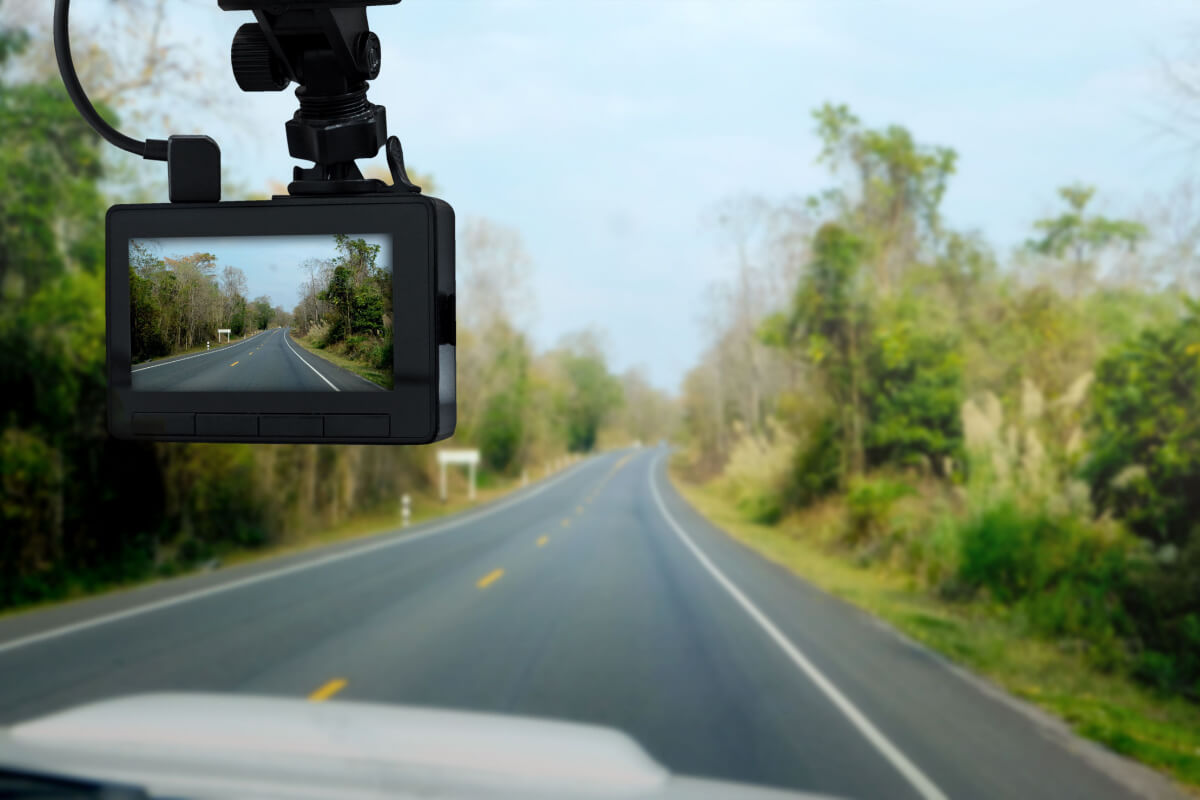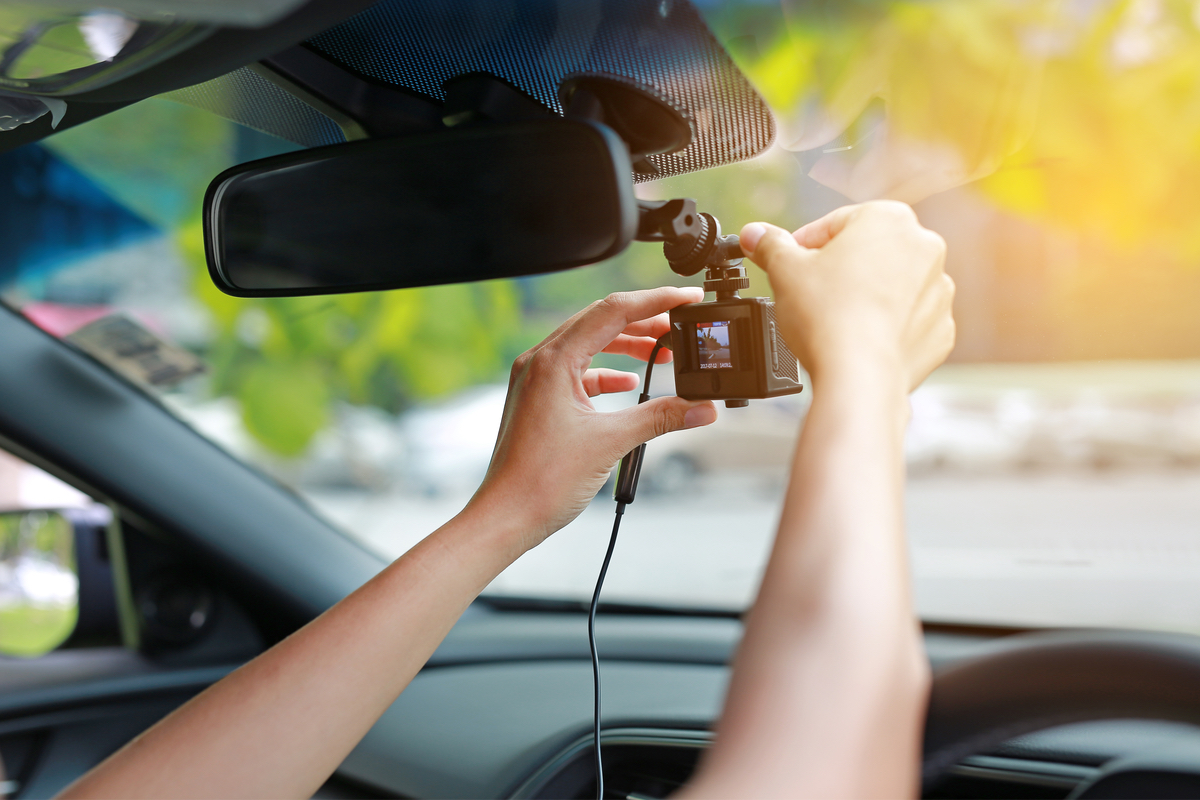
Founding Member & Managing Partner at Gina Corena & Associates
Practice Areas: Personal Injury

Dashcam footage played a key role in the arrest of two teenagers who hit a cyclist in Las Vegas in October of this year. The two men, ages 16 and 18, were arrested for deliberately driving into the cyclist, a former police officer, who died of his injuries. Dashcam technology, a staple in modern vehicles, provides real-time video recording that is pivotal in accident scenarios. In Nevada, the legal system recognizes dashcam footage as admissible evidence in car accident claims. These compact devices, mounted on a vehicle’s dashboard, capture continuous footage of road incidents, offering an unbiased perspective. Nevada law permits such recordings in court proceedings, provided they adhere to privacy and evidence regulations. Dashcam technology thus is a reliable tool for documenting occurrences on the road.
Dashcam footage plays a significant role in car accident claims, offering a clear picture of the events leading up to and during an accident. This technology captures video evidence that can be pivotal in determining fault. When witness statements conflict or are unclear, dashcam videos provide an unbiased account, often swaying the decision-making process. Insurance companies and legal professionals analyze this footage to understand the dynamics of the accident, such as the speed of the vehicles involved, road conditions, and driver behavior. For instance, dashcam evidence can prove whether a driver followed traffic rules or if external factors contributed to the accident. It can also be instrumental in disproving false claims or exaggerated damage reports.
After a car accident in Nevada, preserving dashcam footage is key. First, ensure the safety of all involved and address any immediate medical needs. Once safety is confirmed, focus on the dashcam. It’s important to save the footage as soon as possible to prevent it from being overwritten, especially in devices that loop-record. Turn off the automatic recording feature to safeguard the existing footage. Next, transfer the footage to a secure device like a computer or an external hard drive. This step creates a backup, protecting the evidence from potential dash cam damage or data loss. Label the file clearly with the date and time of the incident for easy reference. If possible, make multiple copies and store them in different locations. These steps ensure the dashcam footage, a valuable piece of evidence in understanding the accident, is preserved and available for any necessary review or proceedings.
When legal experts analyze dashcam footage from a car accident, they focus on several key aspects. The primary goal is to gain an accurate understanding of the event. They look for the sequence of actions leading up to the incident, assessing each driver’s behavior. Speed, road conditions, traffic signals, and signs captured in the footage provide valuable context. Legal experts also examine the visibility and weather conditions during the accident, as these factors can influence driver decisions. The drivers’ reactions, such as sudden braking or swerving, are scrutinized to determine their responses. In cases involving multiple vehicles, the footage helps understand how each vehicle and driver contributed to the accident. Additionally, experts check the time and date stamps to verify the footage’s relevance to the claim.
Dashcam evidence significantly impacts insurance claims and settlements after car accidents. This footage is a reliable information source, often speeding up the claim process. Insurance companies use dashcam videos to assess who is at fault in an accident accurately. This clarity can lead to quicker resolutions and fairer settlements. When dashcam footage clearly shows one party’s responsibility for the accident, it reduces disputes and the need for prolonged investigations. In some cases, this evidence can protect individuals from wrongful liability claims or attempts at insurance fraud. It also helps in determining the extent of damage and the circumstances under which it occurred.
Using dashcam footage in legal contexts comes with its own set of challenges and considerations. One major factor is ensuring the footage complies with privacy laws and regulations. In Nevada, for example, recording without consent can be a legal issue, especially if audio is involved. The quality of the footage is also crucial. It must be clear enough to discern details like license plates, road conditions, and traffic signals. Furthermore, the integrity of the footage is key. It must be free from alterations or edits to be considered reliable evidence. Legal experts must also consider the perspective of the dashcam, as it may not capture all aspects of an incident. Time and date stamps on the footage are essential for establishing a timeline, but they must be accurate to be useful.
Choosing the right dashcam for legal protection involves considering several features. High-resolution video quality is vital for capturing clear images, even in low-light conditions. A dashcam with at least 1080p resolution ensures detailed footage, crucial for identifying vehicles, license plates, and road signs. Wide-angle lenses are beneficial as they provide a broader view of the surroundings, capturing more of the road and its periphery. Look for a dashcam with loop recording, which automatically overwrites the oldest files when the memory is full, ensuring continuous recording. A built-in GPS can be useful, as it records the vehicle’s location and speed, adding context to the footage. Additionally, a dashcam with a G-sensor automatically saves and locks the current video in case of a collision, preventing important footage from being overwritten. Lastly, consider ease of installation and use, ensuring the dashcam can be set up without much hassle and operates effectively without requiring frequent adjustments.

Presenting dashcam evidence effectively in a personal injury case involves several steps. Initially, it’s important to ensure the footage is relevant to the case. The video should clearly show the events leading up to, during, and immediately after the accident. Organizing the footage chronologically aids in establishing a coherent timeline of events. It’s also vital to maintain the original quality of the video. Any form of editing or alteration can lead to questions about the authenticity of the evidence. Presenting the footage in its entirety, rather than select clips, provides a full context of the incident. When displaying the video, highlighting key moments can be beneficial, such as the point of impact or any traffic violations. It’s also helpful to corroborate the dashcam evidence with other forms of evidence like eyewitness statements or police reports, offering a comprehensive view of the incident. Proper presentation of dashcam footage can significantly aid in illustrating the facts of a personal injury case.
If you have suffered an injury in a car accident, call 702-680-1111 or contact our experienced legal team today, and we will work to get the compensation you deserve.

As founder of Gina Corena & Associates, she is dedicated to fighting for the rights of the people who suffer life-changing personal injuries in car, truck and motorcycle accidents as well as other types of personal injury. Gina feels fortunate to serve the Nevada community and hold wrongdoers accountable for their harm to her clients.